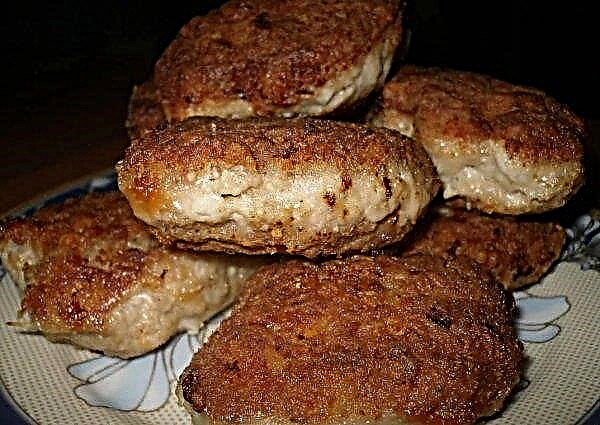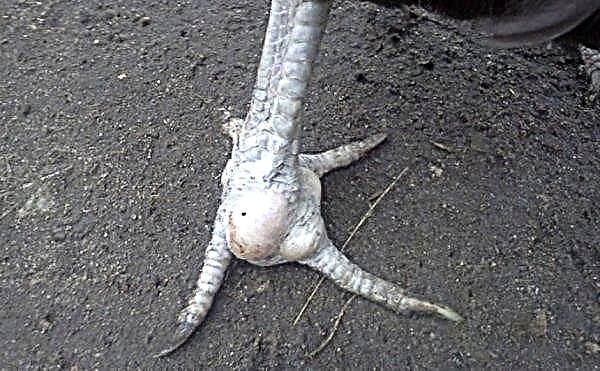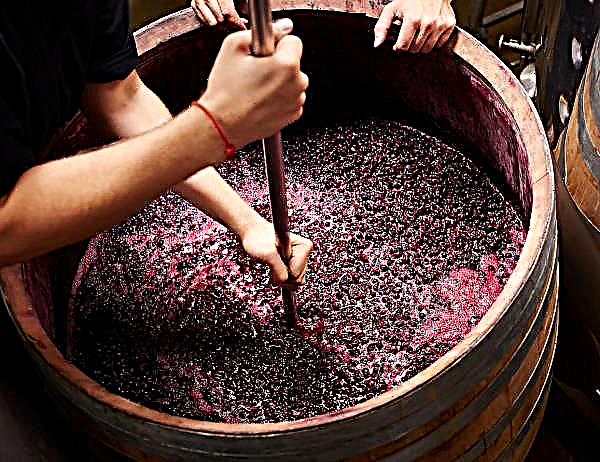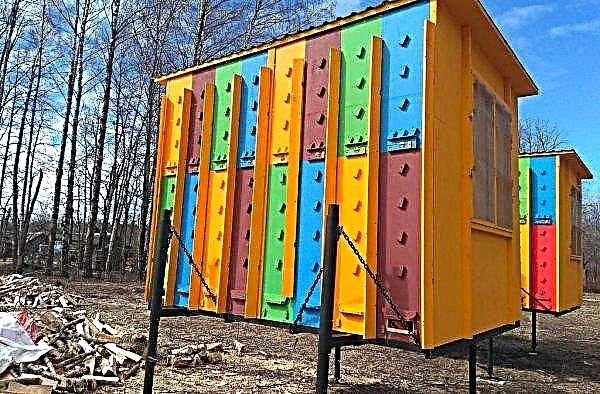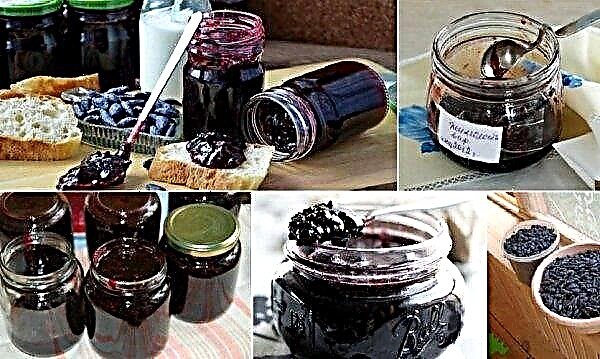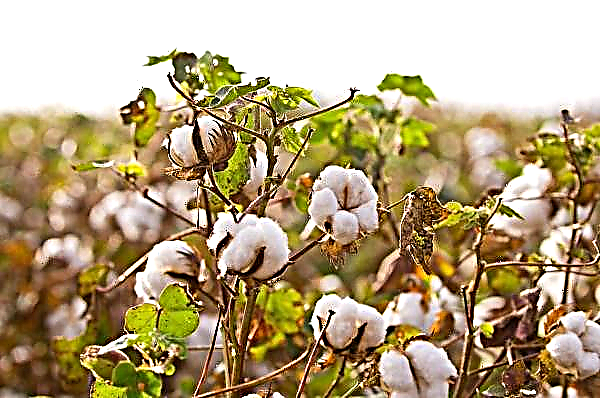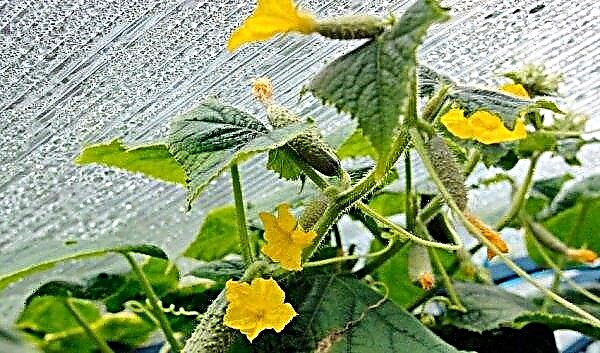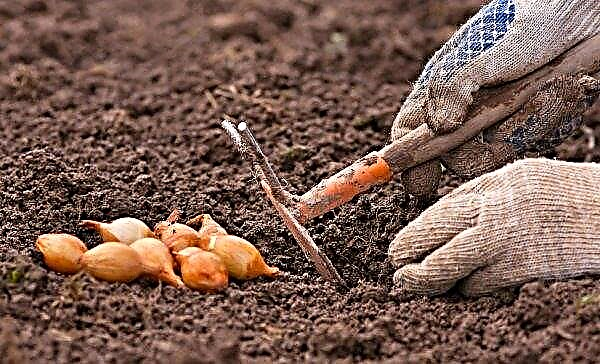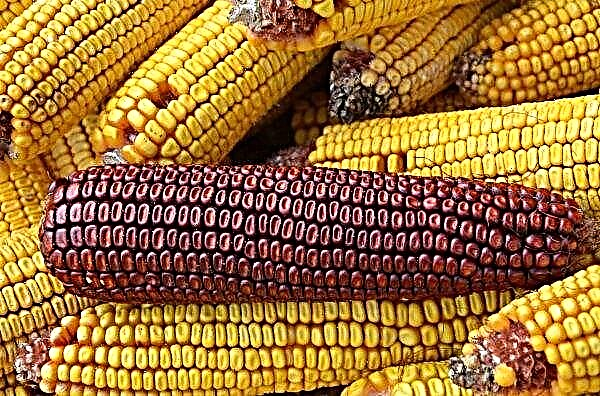One of the oldest breeds in the world are peacock pigeons. They are distinguished by an unusually beautiful tail and grace of movements, for which the birds got their name. In addition to its attractive appearance, the breed is characterized by high fecundity.
Origin history
Peacock pigeons are one of the first breeds tamed by man. Mention of them is found in ancient Indian scriptures. At that time they were used as pets decorating the Rajah palaces. Only in the XVI century. The breed was introduced to England and gradually spread throughout Europe as an ornamental bird.
Breed characteristics
In the world there are several subspecies of peacock pigeons:
- American standard;
- Russian;
- Hungarian;
- black dove peacock;
- German motley.
Birds have a calm disposition and are easily tamed. Almost do not fly. Significant distances can be overcome only in case of urgent need. Usually they are bred for aesthetic purposes only and do not engage in flight training. At home, the birds behave imposingly and periodically warm up, making circles in the air above their dwelling.
Description of appearance
All representatives of the peacock pigeon breed are distinguished by their elegant body structure. A small head is set on a curved, long neck. A small crest is located in the back of the head. The eye sockets are large, the color of the lens varies from black to yellow-brown. The thin beak is neatly curved, covered with a narrow wax in the upper part.
The sternum is expanded. Concavity is clearly visible on the back. Feet of medium length, without plumage. The wings are firmly pressed to the body, slightly lowered down. In the tail of the peacock breed birds, there are from 30 to 50 tail feathers and 2 pads, the change of position of which determines the decorative look.
Did you know? Peacock pigeons have 2 vertebrae more than other breeds. Ordinary representatives have 7, and peacocks have 9.
Features
Distinctive features of peacock pigeons:
- decorative appearance;
- inability to make long flights;
- calm nature;
- medium cold resistance.
The basic rules for choosing good individuals when buying
When choosing a purebred individual, follow these rules:
- It is better to buy pigeons in spring and autumn - at this time you can optimally evaluate the pure breed and decorativeness of individuals.
- Choose birds with a good pedigree.
- Evaluate bird health. This is easy to do by tapping gently on the cage. A healthy individual reacts briskly to sound, while a sick one will remain motionless.
- If possible, go shopping with an experienced breeder or veterinarian.

The content of peacock pigeons at home
Peacock pigeons are undemanding in care. They are distinguished by high reproductive rates. If there is a nest, they can reproduce almost continuously. On average, the dove lays on eggs 4–5 times over the entire season.
Peacock pigeons are bred in aviaries. Throughout the warmer months they are on the street. Male and female individuals are kept separately until mating.
Important! Peacock pigeons cannot be kept with other breeds. Such a neighborhood puts birds in a state of stress, which negatively affects their reproductive performance and external characteristics. Mating peacock with other breeds will lead to their degeneration and spoil the pedigree.
Requirements and optimal conditions
For keeping peacock pigeons, the best option would be a spacious aviary enclosed by a net and equipped with perches. On this territory you need to arrange a dovecote for winter living.
When arranging housing areas, the area is calculated based on the number of individuals. Each pair should have at least 1 sq. Km. m. Equipment that is installed in the pigeon and poultry house must be collapsible. This will ensure proper care and timely disinfection. For each pair, 40x40 cm nests should be equipped.

When keeping pigeons, an important nuance is compliance with the temperature regime:
- in winter - not lower than +10 ° С;
- during the warm period - not higher than +25 ° С.
Another nuance is the humidity level. In the dovecote, this indicator should not exceed 70%, otherwise the risk of spreading fungal diseases increases.
Did you know? Pigeons lack sweat glands. The release of excess moisture occurs only with the help of the respiratory system.
Feeding
When breeding pigeons, peacocks should stock up on feed in advance. The diet of pigeons varies with the changing season.
Seasonal feeding schedule:

- Winter - December-February. Food during this period should be high-calorie and low-protein: 40% wheat and 60% barley.
- Mating - from February 10-15 to the beginning of March. Food should mainly contain protein and fats: 20% bean, 15% sunflower and flax seeds, 65% barley.
- Tribal - March, April. Approximate diet: 30% crushed wheat, 5% sunflower seeds, fodder yeast - 1%, flax seeds - 4%, oats - 15%, millet - 15%. Fat-soluble vitamin E is added to the total feed mass at the rate of 3 drops / 1 kg and potassium iodide 70 g / 1 kg each.
- Flight - relevant only for individuals accustomed to circular flight. Food should contain the optimal amount of carbohydrates: legumes - 20%, wheat - 10%, millet - 30%, barley - 30%, oats - 10%.
- The diet for molting is fully protein: legumes - 30%, millet - 20%, wheat - 10%, oats - 20%, dried corn - 10%, barley - 10%. To the total feed weight during this period, fish oil is added - 10 ml / 1 kg of feed.
The main requirement for the diet is ease of digestion. On average, one day a bird eats 30–40 g of feed. It is advisable to provide birds with access to green food throughout the year.
Important! In winter, quickly digested food should be excluded from the diet of individuals who are deprived of walking. The bird spends a lot of time in a sitting position and, being hungry, can die from hypothermia, even at a plus temperature.
Care and hygiene
Peacock pigeons do not require special care. The main thing is that shelves and feeders are always filled with fresh water and food. Before filling, drinkers and feeders are washed with non-aggressive detergents. Daily walking areas and the house should be cleaned of droppings and scattered food. Sand boxes are installed in the aviary and dovecote so that birds can clean their feathers.
Routine disinfection of the house is carried out before nesting. Birds are planted in a separate room or released into the street. The room is cleaned of dirt and washed with chlorine. You can return the birds back when the dwelling is ventilated and dries.

Breeding
When breeding peacock pigeons, one of the most difficult activities is preparation for mating. To do this, you will need parking boxes measuring 70x50x40 cm. After pairing, this box inside is divided by a partition and converted into 2 nesting compartments.
Important! Place mating boxes in different corners of the house. This will allow the birds to easily find nesting sites and quickly navigate the premises. For this purpose, it is desirable to paint the upper part of the boxes in different colors.
Couple selection
For breeding, individuals of average fatness are selected.
When choosing a pair, 2 approaches are used:
- homogeneous - is a selection of individuals identical in characteristics in order to increase the genetic qualities of the offspring;
- heterogeneous - selection of individuals with different qualitative characteristics, increasing the variability of offspring.
The main parameters that are guided when choosing a pair:
- height;
- pedigree;
- features of the development of an individual;
- constitution.

The main goal of the breeder is to improve pedigree traits. Even when choosing one individual with low quality indicators, they should overlap with the purity of blood of the second partner. As soon as all the dominant characteristics are fixed in the offspring, we can proceed to the development of secondary characters.
Uncontrolled mating causes mutations. The breeder must keep a stud book.
Pairing
The matched pair is placed in the steam box during the day and left there overnight. In the morning, pigeons are released to the common flock and are watching them. If the male walks everywhere near the female, then the process was successful. After a couple of days, you can install the nest and prepare for the appearance of chicks.
Incubation
48 hours after fertilization, the female lays 2 eggs (in young individuals - 1 egg). After that, the dove sits in the nest. Hatching lasts 16–19 days.
Important! After 12 days of incubation, when the bird goes for food, check the biomaterial for embryos. This can be done using an ovoscope or simply by examining the inside of an egg in the light. In a fertilized egg, the blood vessels of the embryo are clearly visible.
Breeding
In peacock pigeons, the maternal instinct is well developed, so after hatching the chicks, they begin to take active care of them. The breeder's task is to control the implementation of parental functions and provide birds with a complete diet. The female feeds the chicks with goiter milk for 1 month. Then the parental individuals independently begin to teach young animals to eat solid feeds.
If for some reason the female has not fed the babies, she will have to do it artificially. Pigeons can do without food for no more than 3 hours. For artificial feeding, mix 2 tsp. warm milk and grated egg yolk. The mixture is pipetted and fed to the babies. From 4 weeks, crushed crops are introduced into the diet.

Possible diseases, their treatment and prevention
Peacock pigeons can become infected with the following diseases:
- Salmonellosis - the causative agent is E. coli,entering the body of a bird through the droppings of infected tribesmen or animals that have access to the aviary, as well as through food in an insufficiently clean feeder. In a bird, the general state of health sharply worsens, and there is no appetite.
Find out also

- Ornithosis - a contagious viral disease that spreads not only to pigeons, but also to humans. Symptoms appear immediately. In birds, mucous fluid oozes from the eyes, wheezing is clearly audible in the lungs. Treatment consists of vitamin complexes and special drugs that stop the spread of the disease.
- Trichomoniasis - affects the mucous membranes. Edematous spots appear in the bird's mouth, which interferes with normal breathing, and severe diarrhea is often noted. The treatment is based on vitamin antiviral therapy.
- Adenovirus - affects young animals aged 6–9 months. The main symptoms: lack of appetite, constant vomiting and watery droppings. The bird loses weight very quickly and can die without special preparations.
- regular disinfection of premises, cages, drinking bowls and feeders;
- sufficient walking in the fresh air;
- providing birds with vitamins in the winter and after the birth of babies;
- immediate removal of diseased individuals from the house;
- deworming every 6-12 months, depending on the epidemiological situation in the region;
- vaccination of the entire livestock;
- rejection of low-breed individuals in the early stages.
Did you know? Nodding your head while walking with pigeons is associated with the structural features of the visual apparatus. Thus, the bird's body improves the visibility of surrounding objects.
Peacock pigeons are one of the oldest and most beautiful varieties that have been tamed by humans and used as pets. In this role they are used to this day, exhibiting at various exhibitions. Peacock pigeons practically do not fly, but move more often on the ground. They are unpretentious in care and have a gentle disposition.


